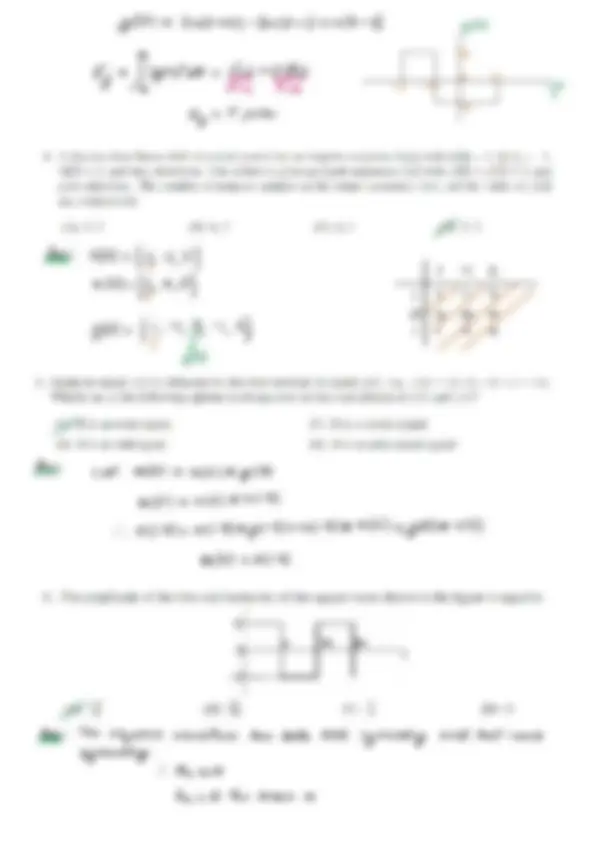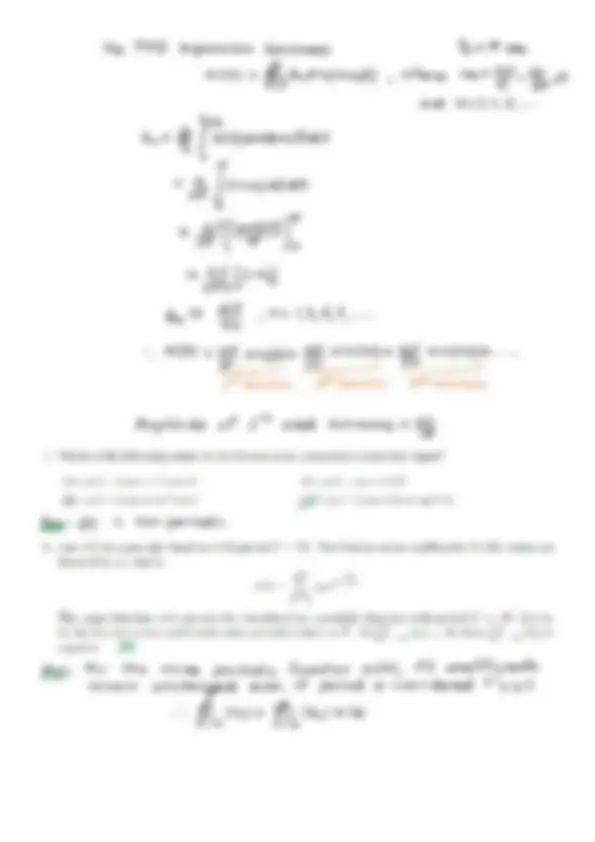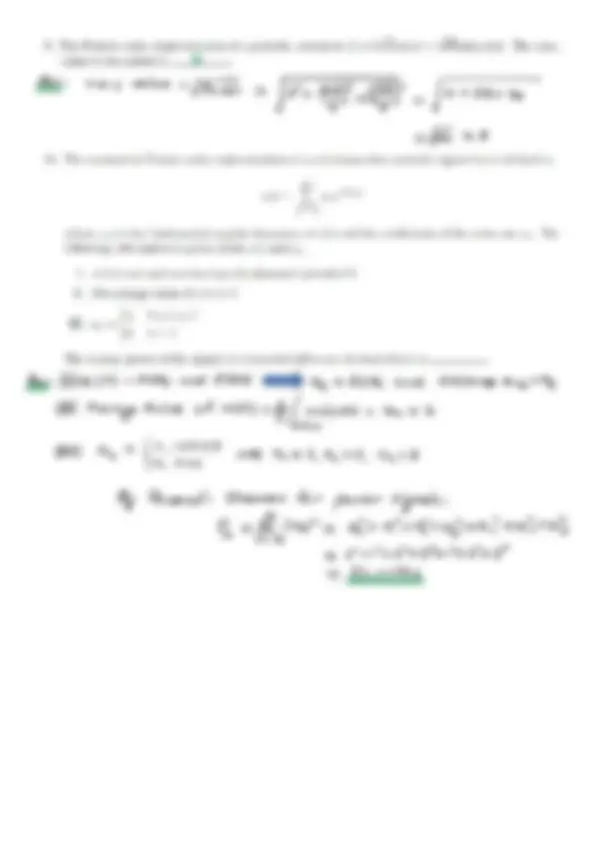Partial preview of the text
Download SIGNALS AND SYSTEMS QUIZ 2 ECE and more Quizzes Signals and Systems in PDF only on Docsity!
INDIAN INSTITUTE OF INFORMATION TECHNOLOGY KOTTAYAM Department of Electronics and Communication Engineering Indian Institute of IEC 122 SIGNALS & SYSTEMS Information Technology Quiz IT - March 2025 Kottayam Time: 20 minutes Semester II Max marks: 10 1. A cascade system having the impulse responses /j[n] = {L.-T} and ho|[n| = {L, 1} is shown in the figure below, where 7 symbol denotes the time origin. x[n] hn] h;[n] y(n] The input sequence x [7] for which the cascade system produces an output y[7] = (1.2, 1,-1,-2.-1} 5 {42,2, I} Ans. ho) =$1,-1 fu {4-4} haln] = {1,1} The oPhewtive impulse yesponse. of LHe cascadeol gen hs hon] = bh, Ln] * bh, [7 gr by h i h [el = {hotpotes 1 a : Given g fr) = {4, 2, 4,-1,72,-ap— Greet =6 t Length of whad= Lae i | fo] xf ~fa) fa] | | xl) “afu-=l2)- *L3 Comparing girl with r[n] *hln) - ° % g, on xe] =! x[r] =2 ge(2J-1 = |=> ef] =2 2cf3]= 1 x)= {1.2204} 2. Consider a discrete-time periodic signal with period VN = S. Let the discrete-time Vourier series ik2an (DTFS) representation be x[a] = vio age 5, where ag = 1a) = 3j,a2 = 2/,a3 = —2/ and a4 = —3j. The value of the sum ean x[n] sin is BY : 4 j Ans: S ~[n] sin ote = ot xInp fe = nso n=O (I \ uy ( 4 a . (arn - ie, Zr hl sin (#*) _ 10 3. Consider the parallel combination of two LTT systems shown in the figure. UNG) os Gow Jnl) The impulse responses of the systems are hy (t) = 26(t + 2) - 36(r + 1) h(t) = 0(1 2) If the input x(/) is a unit step signal, then the energy of y(/) is 7 Ans: The impulse yes ponse of the Parallel comb/nation /s h(t) =b, ©) +4,.@) ht) = 28#+2)— 386414 54-2) Given x(t) = ult) 1g CD = *C) AG) = ule) x [ 25(e+2) - 3 S(t+) + SG-2 The TFS expansion becomes To = 17 see To ont n=l, 3, 5,--- oO x(t) = Z basin(nwst) » Mheve Not 272m 4 = ar a bye = 4V [2 +1] Vv n b= av , nz 1,3,5,7,---- “ %(4) = AV sin(gn+ 4Y sin(3t) + 4¥ sin(se)+... rT 3r » 3% 4 4°* havmenic 34 harmenic 5 armonic Amplitude of 1°* odch harmonic = 4V a 7. Which of the following cannot be the Fourier series expansion of a periodic signal? (A) x(1) = 2 cos £ +3 cos 34 (C) x) =cos1+0.5 (B) x(t) =2 cos x1 +7 cost Pr) = 2 cos 1.Sx/+ sin 3.51 Ans: (D) /s non-period.jc 8. Let .x(¢) be a periodic function with period T = 10. The Fourier series coefficients for this series are denoted by ax, that is ., 20 x(t) = y apel* Tt k==00 The same function x(/) can also be considered as a periodic function with period 7’ = 40. Let by be the Fourier series coeflicients when period is taken as 7’. If D7_. lax] = 16, then DP _.., |bx| is equalto 16 . Fer the same peviodic function = ns 9. The Fourier series representation of a periodic current is [2 + 6V2coswr + V48sin2at]A. The r.m.s value of the current is 8 Boss vms value = Pree = [e+ CGY . Jerson z _ = {64 =8 10. The exponential Fourier series representation of a continuous-time periodic signal x(t) is defined as co x(t) = > aged hoat k=-00 where ot is the fundamental angular frequency of x(f) and the coefficients of the series are aj. The following information is given about x(t) and ay. T. x(1) is real and even having a fundamental period of 6 Il. The average value of x(7) is 2 k, 1(t) =tf xayae = a,=2 = fk, !ek<3 (az) a, ~ {k k>3 = a=, a,=2, a,=3 a B, Paxseval’s theerem for power signals : % 2 2 BE = 2 lal*= at+aftrartap+ajta,ta, 2-60 cm ot ite 22+ 3h 24 2+ 37 = B22 watts 













